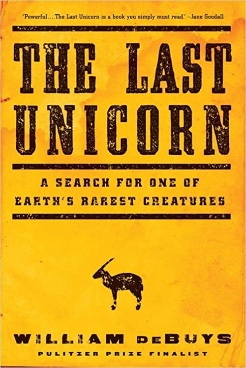Strange paths lead to unexpected places, and sometimes the world opens up. Early in 2009 I researched efforts in central Borneo to protect a forest where captive orangutans were freed and reintroduced into the wild. Months later, I gave a brief talk on the project to a roomful of strangers in Washington, DC. One of those strangers, Jack Tordoff, telephoned the following week. He asked,
“How would you like to write about saola?”
“About what?”
I had never heard the world saola spoken.
Tordoff explained that saola (Pseudoryx nghetinhensis) were among the rarest large animals on Earth and that they became known to Western science only in 1992. He said they constituted the sole species of a unique genus of bovids – grazing animals that include antelopes, goats, cattle, bison, and other ruminants. He added that they lived under constant threat, mainly from illegal snaring, in their limited range in the Annamite Mountains that divide Vietnam and Laos. He also said that they were beautiful, enigmatic, and, for him as well as many other conservation biologists, inspiring. Tordoff invited me to attend a meeting of the Saola Working Group, or SWG, a subunit of the Asian Wild Cattle Specialist Group of the International Union for the Conservation of Nature, in Vientiane, Laos, in August of 2009.
The meeting’s energetic and dedicated coordinator was Bill Robichaud, a field biologist experienced in Southeast Asia, particularly Laos. Robichaud and I began a conservation that continued stateside. Eventually, in February and March of 2011, I was privileged to join Robichaud on a journey, recounted here, into remote corners of the Nakai–Nam Theun National Protected Area in Laos, hard by the international border with Vietnam. Our expedition had multiple purposes, principally involving reconnaissance of potential saola habitat and evaluation of poaching pressure. Our mission was also “diplomatic” in the sense that it was intended to build support for wildlife conservation among indigenous villagers living or hunting where saola might be found. Overall we hoped to advance priorities identified by Robichaud and his SWG colleagues and to contribute in some way, no matter how small, to the group’s paramount goal, which was – and remains – to save the saola from extinction.
